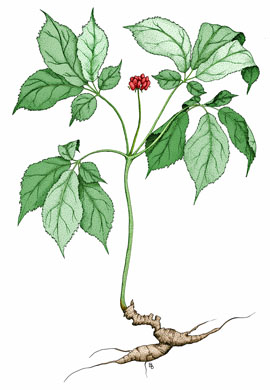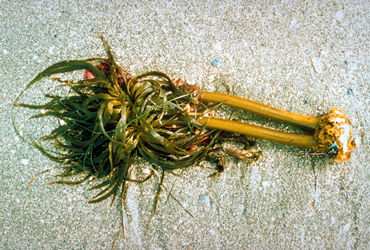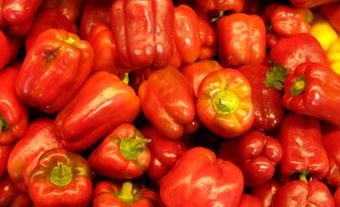About a third of the world's estimated 400 000 species of higher or vascular plants have probably been used for medicinal purposes by indigenous societies, generally in a raw or minimally processed form. In much of the developing world, up to 80% of medicines continue to be plant-based, and used in a relatively simple form. In Canada, as in most of the Western world, medicine has focused on prescription pharmaceuticals. Most of these are synthesized from basic chemicals, but perhaps a quarter of them derived at least partly from plant extracts.
In Western countries, there is also a substantial, non-prescription, "over-the-counter" (OTC) market for plants or their extracts that are consumed to promote or restore health. These products may be (a) fairly raw forms of plant material, (b) plant extracts in pill or capsule form (often called "nutraceuticals"), and (c) prepared foods fortified with plant extracts. Categories (a) and (b) are often collectively called "phytonutrients"; they are legislatively termed "natural health products" in Canada and "dietary supplements" in the United States. Professional "herbal" practitioners (including many naturopaths) often employ such preparations. In some countries (notably Germany) the use of plant-based medicines is quite extensive, but generally most physicians rely on pharmaceutical medicines which are not plant-based. Although plant-based health products may seem harmless because they are "natural," many of those offered on the market remain unproven. Consulting qualified medical professionals is therefore indispensable in determining whether their use is medically advisable to prevent or treat specific symptoms or diseases.
Indigenous peoples of Canada utilized more than 1000 of the approximately 4000 indigenous plant species for medicinal purposes (see Plants, Aboriginal Peoples uses; Aboriginal Peoples medicine). Today, dozens of native Canadian plants are collected for the medicinal marketplace. Particularly important species in this regard include goldenseal (Hydrastis canadensis), blue cohosh (Caulophyllum) species, black cohosh (Cimicifuga racemosa), seneca snakeroot (Polygala senega), May-apple (Podophyllum peltatum), cascara (Rhamnus purshianus), and bloodroot (Sanguinaria canadensis). The Canadian indigenous plant species that have contributed most significantly to curing disease are Pacific yew (Taxus brevifolia) and Canada yew (Taxus canadensis), from which paclitaxel (often available as Taxol) is produced, an invaluable treatment for ovarian and other forms of cancer. Harvest of the native populations of these two species, and indeed some other Canadian species, is governed by laws intended to ensure sustainability. Strictly, plants that are harvested from the wild are not "crops" in the narrow sense (ie, cultivated for harvest). However, many of these plants are planted in the wild (so-called "woodland cultivation"), and many are also cultivated as conventional crops.
From a commercial viewpoint, the most valuable medicinal crop in Canada is Canadian ginseng (Panax quinquefolius), which grows naturally in eastern North America. Plants such as ginseng that become commercially popular tend to be overcollected from the wild, and it is appropriate to then develop a cultivated supply. In Canada the very few remaining native ginseng populations are protected, and the crop is cultivated mainly in Ontario and British Columbia. Most of the harvest is sold in China, and produces revenue of up to 100 million dollars annually.
Numerous medicinal species occur in woodlands as slow-growing perennials, and this applies to all of the species mentioned above. Such plants have evolved constituents to defend themselves against insects and other life forms and these chemicals have proven to be useful as medicinal agents. However, the chemicals are often very toxic, and require professional usage.
Marine algae (seaweeds) are not closely related to land plants, but some Canadian seaweeds are thought to have considerable potential as sources of new medicinals, especially certain "brown algae" called kelps. Canada has the longest coastline of any nation: about 244 000 kilometres bordering the Atlantic, Pacific, and Arctic Oceans where marine algae can be harvested. In much of the world (especially Asia) seaweeds are grown in coastal areas, and kelp is also cultivated to a small extent in Canada.
Medicinal plants of foreign origin are also cultivated in Canada. The most publicized of these is marijuana (Cannabis sativa), grown under authorization. The federal government provides marijuana not because it is considered to be therapeutic but as a result of court decisions that Canadians were entitled to access to it for medicinal use. In 2003, the first medicinal marijuana was dispensed for official use by Canadian patients, and thousands have subsequently been licensed to purchase marijuana by prescription. Unauthorized use remains prohibited.
There are many foreign medicinal species grown in Canada on a commercial basis. For instance, sea buckthorn (Hippophae rhamnoides), a shrub of Chinese origin, is extensively planted. Oil from the fruit has been incorporated into commercial ointments for treating a wide variety of types of skin damage, including burns, bedsores, eczema and radiation injury. The Eurasian species borage (Borago officinalis) has been cultivated in Canada for its seed oil, which contains the fatty acid gamma-linolenic acid, known to improve skin conditions. Echinacea, which has been considered to have immune-boosting properties valuable for reducing the symptoms of colds, is made from Echinacea species (one of which grows naturally in Canada) grown in Canada and elsewhere.
In recent years, conventional crops have been genetically engineered for the production of desired medicinals. Such valuable substances can be produced in microbial cultures, cultured animal cells, and transgenic animals, but often plants are preferable. Producing medicinals in genetically transformed plants has come to be known as "molecular farming." Concerns about possible toxicity to humans and wildlife which could result from growing such modified plants outdoors is slowing development of the industry, but molecular farming is increasing in importance.
Tobacco (Nicotiana tabacum) has become the most important species for the production of medicinal substances by molecular farming. This is ironic, because it is the world's most harmful plant. The only recognized medicinal value is as the source of nicotine used in nicotine gum and the nicotine patch, prescription products intended to assist tobacco users to overcome their addiction gradually. Of the various classes of biochemicals that make up the human body, proteins are of principal concern in the field of medicine. Molecular farming using tobacco has produced a wide range of valuable therapeutic proteins. The most important of these are "monoclonal antibodies," which are protein molecules used for the precise diagnosis of bacterial and viral infections (invading bacteria and viruses attach to specific antibodies). Antibodies are also used in medicine as preventative or curative agents, for example for preventing tooth decay, reducing kidney transplant rejection, and helping in cancer treatment. Other medicinal proteins that have been produced in tobacco include vaccines, insulin used to treat diabetes, growth hormones used to treat pituitary dwarfism, and a protein called "factor IX" employed for blood clotting. Even human hemoglobin, a complex protein that carries oxygen to various parts of the blood, has been produced in tobacco.

 Share on Facebook
Share on Facebook Share on X
Share on X Share by Email
Share by Email Share on Google Classroom
Share on Google Classroom




